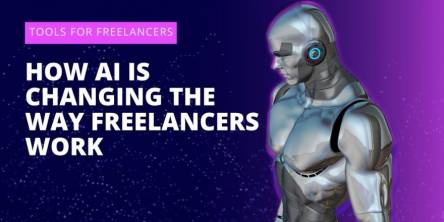AI Chatbot Training Never Ends: Why Continuous Learning is the Key to Customer Support Success

Many AI-powered projects fail after the launch owing to a common misconception: the belief that once an AI chatbot for customer service is introduced, it functions effectively without any intervention. This "set it and forget it" approach does not consider the dynamic nature of the underlying AI technology and customer interactions. A generative AI chatbot is not static; this is an evolving system that needs continuous learning as well as adaptation to be effective.
Continuous learning is the baseline for long-term success. Without it, virtual assistants can quickly become outdated, offering irrelevant or incorrect answers that frustrate people and degrade the customer experience. The article explains why continuous learning is needed for AI technology in customer support and how to implement a comprehensive training framework there.
Why One-Time Training Isn’t Enough in Customer Support
Changing Customer Expectations and Language
Client expectations and language are constantly changing. Some of the key factors that affect this change are covered below:
● Slang: New slang expressions appear regularly, and a generative AI chatbot ought to comprehend and adapt to them to stay effective.
● Product Names: As firms introduce new goods, AI models ought to understand these changes and respond accurately to these names.
● Tone Preferences: The preferred tone of communication can change over time, and AI tools should adjust to maintain a positive client experience.
In this way, if an AI chatbot for customer service fails to comprehend contemporary language or the latest product terminology, it risks becoming obsolete.
Evolving Business Operations
Business operations are not static. Thus, continuous training is crucial due to the following reasons:
● New SKUs: Introduction of new products can make previous responses ineffective.
● Policies: Changes in firm policies presuppose updates to chatbot responses.
● Workflows: New workflows can make old responses obsolete, necessitating retraining.
Even frequently asked questions (FAQs) can be irrelevant with all changes that a company makes. Hence, if a generative AI chatbot is not retrained to reflect these changes, a firm might start experiencing issues.
Unexpected Behavior from AI Models
AI models can show unexpected behavior over time. For example:
● Drifting: AI chatbot for customer service may develop incorrect responses without regular updates.
● Misclassification: Wrong categorization of user queries leads to frustration.
● Hallucinations: Technology might produce responses that are not based on actual information.
● Outdated Answers: Without continuous checks, AI models might offer outdated information.
In this way, continuous monitoring and improvements are necessary to maintain the reliability and accuracy of a chatbot.
What Continuous AI Chatbot Training Actually Looks Like
By setting a daily feedback approach, you can be able to gather information from live chat interactions. It can be achieved by flagging misunderstood inquiries in real time, using thumbs up/down ratings from clients to comprehend response accuracy, asking human personnel to review chatbot interactions, and collecting data from customers through surveys. These methods assist identify and correct problems as they appear, ensuring a chatbot remains accurate and effective.
Weekly conversation audits involve a more thorough review of AI chatbot for customer service interactions. Regular spot-checking sessions for accuracy, tone, and completeness, along with tracking escalations that could have been avoided, offer data about areas where a chatbot requires improvement. Such regular review helps ensure ambitious standards of customer interaction.
Monthly data annotation cycles include human-in-the-loop approach to mark edge cases and support training sets with real examples. Human reviewers provide complex or unusual interactions, and these examples are incorporated into the training data to enhance generative AI chatbot’s performance. The process helps AI manage a wide range of cases, including those that are less common but still crucial.
Internal Signals That Your Chatbot Needs Re-Training
Monitoring internal signals can show when an AI chatbot for customer service needs retraining. Some of the key indicators to use are explained below:
● Repeat Tickets Post-Chatbot Resolution: When customers contact your agents for issues that a chatbot has already processed, it means that the initial responses were inadequate. To minimize that possibility, you need to prepare your chatbots in advance. CoSupport AI can help you with this.
● Spike in Handovers for Known Topics: If there is a sudden growth in several conversations being transferred to human agents for issues a chatbot should manage, it may indicate that AI’s responses are no longer accurate.
● Drop in CSAT or Rise in Neutral/Negative Sentiment: A drop in customer satisfaction scores or an increase in neutral or negative feedback can mean that an AI chatbot for customer service is not meeting user expectations.
● Higher Agent Workload Despite Chatbot Presence: If your staff members are overburdened even with a chatbot in place, it means that the technology is not resolving problems efficiently.
By looking at these signals, firms can proactively determine when their technology needs assistance to maintain optimal performance.
Turning Agents into AI Trainers
Why Frontline Staff Are Your Best Data Source
Frontline staff members are invaluable for chatbot improvements because these people interact directly with clients and know their needs and frustrations. They can ensure:
● Insight into Confusing Replies: Agents see which replies confuse customers and can offer real-world examples of these interactions.
● Tagging Real-World Examples: People can tag actual interactions that should be included in training sets to enhance a chatbot's accuracy and relevance.
Building Feedback Loops That Stick
Integrating feedback into quality assurance (QA) and offering time allocations for chatbot contributions can build effective feedback mechanisms. Some strategies to use:
● Integrate Feedback into QA Processes: Feedback from agents should be systematically included in QA reviews.
● Offer Incentives: Rewards or time for agents to contribute to chatbot training, encouraging their participation, should be planned.
Conclusion Thoughts
Customer support is not static, and neither should your AI tools. Continuous learning makes AI relevant, trusted by customers, and useful. Chatbot training should be a strategic function of any company involved in customer operations—ongoing, measurable, and human-supported. By implementing a comprehensive and continuous learning framework, firms can ensure their AI models remain effective and responsive to evolving customer needs and business operations.
Similar Articles
Banks are facing a moment of truth. Customer expectations are rising faster than most institutions can reshape their operating models.
How AI SDRs turn first contact into booked meetings with smart outreach strategies in this step-by-step journey breakdown.
How AI is transforming freelancing by boosting productivity, streamlining tasks, and reshaping the future of independent work.
AI chatbots are reshaping scam prevention with real-time detection, deepfake defense, and personalized protection against cybercriminals.
When I first started working in branding, creating a logo was a long and expensive process. Ordering from a designer required weeks of discussions and a budget that small businesses often couldn’t afford.
Generative AI is not just another addition to the toolbox of products; it will soon serve as the co-pilot for the entire lifecycle process, including discovery and delivery.
Learn how AI code generation speeds up software development by reducing repetitive tasks, improving code quality, and supporting Agile and DevOps teams.
Explore how AI is reshaping the workforce, from emerging jobs and essential skills to global opportunities, and learn how to adapt and thrive in an AI-driven economy.
Artificial Intelligence (AI) has transformed most industries to be more efficient, individualized, and automate the heavily complicated tasks. Nevertheless,









